Difference between Stickball and Baseball
Key Difference: Stickball is actually a street game that is very similar to baseball and also includes bases. It is an informal game that has not been codified by a state or international governing body. Stickball is played using a broom handle and any ball relatively the size of a tennis ball. Baseball is a bat-and-ball sport that is most popular in the United States, though it is also played in other countries. The game consists of two teams with nine players each that take turns batting/hitting and fielding/pitching. The baseball bat is a smooth metal or wooden round bat that has a round top and a flat knob at the bottom.
Stickball and baseball are two popular bat-and-ball games that are played in the United States. While baseball is popular all over the country, stickball is more famous only in a few northeastern states. Stickball is actually considered as the street version of baseball and has similar rules and gamely. However, they are distinctly different from each other.
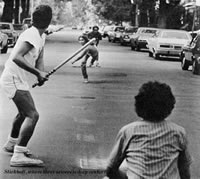 Stickball is actually a street game that is very similar to baseball and also includes bases. It is an informal game that has not been codified by a state or international governing body. However, many places have actually set up leagues that allow people to come together and play against each other in teams. Stickball is popularly played sport in large cities in the Northeastern United States, especially New York City and Philadelphia. Stickball is believed to have originated in the streets of New York around the 1930s, with the exact origin dates still unknown. It is believed to have its roots during the Great Depression.
Stickball is actually a street game that is very similar to baseball and also includes bases. It is an informal game that has not been codified by a state or international governing body. However, many places have actually set up leagues that allow people to come together and play against each other in teams. Stickball is popularly played sport in large cities in the Northeastern United States, especially New York City and Philadelphia. Stickball is believed to have originated in the streets of New York around the 1930s, with the exact origin dates still unknown. It is believed to have its roots during the Great Depression.
Stickball is played using a broom handle and any ball relatively the size of a tennis ball. The ball could be made of any material including rubber ball, leather ball, etc. The rules for the game vary depending on the people that are playing the game. Though, the basic rules are similar to the rules of baseball, the rules change when it comes to pitching. There are three different styles of stickball and each is classified on the basis of the pitch: fast pitch, slow pitch and fungo. In fast pitch, the batter is placed against a wall or a fence that is marked with a square rectangle using a chalk. The pitcher throws the ball straight at the batter; if the batter misses the ball and the ball strikes the rectangle then it counts as a strike. In order for the ball to be counted as a strike it must have chalk on it. If there is no chalk it counts as a ball. This type is most commonly played in Staten Island, Brooklyn and Long Island schools. In slow pitch, the pitcher stands approximately 40 to 50 feet away from the batter and throws the ball. The batter must strike the ball after one bounce. In fungo, the batter tosses the ball into the air and then strikes it on the way down after one or two bounces.
Depending on the rules established before game play, the batter could be out in one, two or three strikes. If the ball lands on a roof or breaks a neighborhood window, this counts as a home run. The batter must also run bases to earn runs. The bases could be man-hole covers, bags of sand or any other objects. Many versions determine hits by how far the ball travels with the batter not having to run bases; however leagues usually have the batter run bases. The most popular league for Stickball is New York Emperors Stickball League. Stickball has many variants in Boston and Toronto, which are similar to stickball but they are different in game play and equipment.
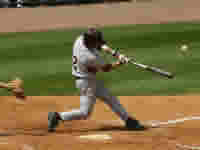 Baseball is a bat-and-ball sport that is most popular in the United States, though it is also played in other countries. Earlier forms of baseball have been difficult to trace in origin, though it can be linked to a game played in France known as ‘la soule’ in 1344. The book “Baseball Before We Knew It: A Search for the Roots of the Game” by David Block suggests that the game originates in England. The book states that baseball was adapted from an older game called Rounders. The earliest known reference of baseball was found in a 1744 British publication “A Little Pretty Pocket-Book” by John Newbery, which shows similar set-up to baseball except the field, which was triangle in shape, compared to the diamond it is now. The game was brought to the United States by English immigrants. It started gaining popularity during the 1850s as a favorite pastime. By the mid-1850s, sixteen area clubs formed the sport's first governing body, the National Association of Base Ball Players.
Baseball is a bat-and-ball sport that is most popular in the United States, though it is also played in other countries. Earlier forms of baseball have been difficult to trace in origin, though it can be linked to a game played in France known as ‘la soule’ in 1344. The book “Baseball Before We Knew It: A Search for the Roots of the Game” by David Block suggests that the game originates in England. The book states that baseball was adapted from an older game called Rounders. The earliest known reference of baseball was found in a 1744 British publication “A Little Pretty Pocket-Book” by John Newbery, which shows similar set-up to baseball except the field, which was triangle in shape, compared to the diamond it is now. The game was brought to the United States by English immigrants. It started gaining popularity during the 1850s as a favorite pastime. By the mid-1850s, sixteen area clubs formed the sport's first governing body, the National Association of Base Ball Players.
The game consists of two teams with nine players each that take turns batting/hitting and fielding/pitching. The turns are described as innings, with each game consisting of nine innings. One team bats during the first half of the inning, while the second team bats during the second half of the inning. The objective of the game is to strike the ball and cover all the four bases without being touched by the ball and scoring ‘runs’ or ‘points’. The batter first hits from the home plate, after which he moves counterclockwise to the first base, the second base, the third base and then finally back to the home base in order to score a run. The team that is fielding will keep the batter from running the bases by touching him with the ball in order to make him out. When three outs are recorded, the teams switch role for the second-half of the inning. If the scores are tied after nine-innings, then extra innings are added to the game. In addition to scoring runs by running all the bases, the batter can also hit the ball in the air within the foul lines over the entire outfield and outfield fence; this can also result in a homerun.
The batter has three chances to hit the ball into the field. A pitch that is not hit is known as a strike and three strikes recorded against a player results in the batter being out. A strike is called when the batter lets a well-pitched ball go through to the catcher, the batter swings at any ball and misses or foul tips it directly into the catcher's hands or the batter hits a foul ball. There are five ways a batter can be dismissed: the strikeout, the flyout, the ground out, the force out and the tag out.
The baseball bat is a smooth metal or wooden round bat that has a round top and a flat knob at the bottom. The bat may be no more than 2.75 inches in diameter at the thickest part and no more than 42 inches long. The bat weighs no more than 33 ounces; however the weight can vary depending on the player. The baseball is made up of a mixture of cork and rubber, which is wrapped in yarn and then covered with leather. The ball is circular in shape and measures between 9 to 91⁄4 inches in circumference 27⁄8–3 inches in diameter. The ball should not weigh under 5 ounces or over 5 and 1/4 ounces. The field is 60 feet, 6 inches, with a diamond shape in one corner where the majority of the game is played.
|
|
Stickball |
Baseball |
|
Definition |
Stickball is a bat-and-ball sport. |
Baseball is a bat-and-ball sport played between two teams of 9 players each. |
|
Bat |
The bat is a thin piece of wood resembling a broom handle. |
A smooth metal or wooden round bat that is used to strike balls. It has a round top and a flat knob at the bottom of the bat. The bat may be no more than 2.75 inches in diameter at the thickest part and no more than 42 inches long. The bat weighs no more than 33 ounces; however the weight can vary depending on the player. |
|
Ball |
A number of rubber balls can be used. The size of the ball must be approximately the size of a baseball. |
The baseball is made up of a mixture of cork and rubber, which is wrapped in yarn and then covered with leather. The ball is circular in shape and measures between 9 to 91⁄4 inches in circumference 27⁄8–3 inches in diameter. The ball should not weigh under 5 ounces or over 5 and 1/4 ounces. |
|
Color of Ball |
No required color. |
The ball is white with red stitches on it. |
|
Field |
Any open field with or without fence is allowed. Many people even play it on the streets using buildings as backstop. |
60 feet, 6 inches or 18.4 meters (approx. 52 ft or 15.8 m between pitcher's starting point and batter at delivery) |
|
Protective gear |
None. |
Gloves in non-throwing hand may use hard plastic headgear and padding. Catchers require plastic shinguards, padded chest protectors, and helmets. Batters must use hard plastic helmet, may use shiguards and gloves. |
|
Number of Umpires/Referees |
None for the street version. 1-2 for leagues. |
Major league games use six umpires; however they can vary between 1 and 6 depending upon the game. |
|
Number of Players |
Depends on the rules that are set prior to game play. |
9 or 10 depending on league rules and team decisions. |
|
Governing Body |
The different leagues govern their own teams. No international or state governing body. |
International Baseball Federation |
|
Balls/Pitches’ allowed per batsman |
There is no limit to the number of balls. The batter may continue to hit if he doesn’t strike out, walks or is hit by a pitch. |
There is no limit to the number of balls. The batter may continue to hit who doesn’t strike out, walks, is hit by a pitch or hits into fair territory. |
|
Maximum runs scored by a ball/pitch |
The number of bases can vary but many games often have four bases. |
Four bases |
|
Batting order |
Set prior to the game. The order of the batsmen is determined prior to the beginning of the game. |
Set prior to the game. The order of the batsmen is determined prior to the beginning of the game. |
|
Innings |
N/A |
Nine innings per game. |
|
Edge of the field |
Any neighboring houses. No determined edge. |
Fence or wall beyond a dirt proximity area. |
|
Participating Countries |
Northeastern United States, most commonly the states of New York and Philadelphia. |
USA, Canada, Cuba, DR, Venezuela, Colombia, NL Antilles, So. Korea, China, Chinese Taipei, Japan, Australia, New Zealand, Guam, Mexico, Taiwan, Nicaragua, Philippines, France, etc. |
Image Courtesy: tumblr.com, sbsa.org.sg






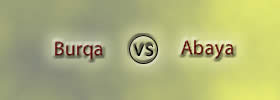
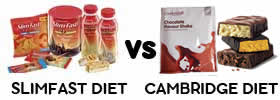
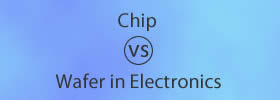
Add new comment